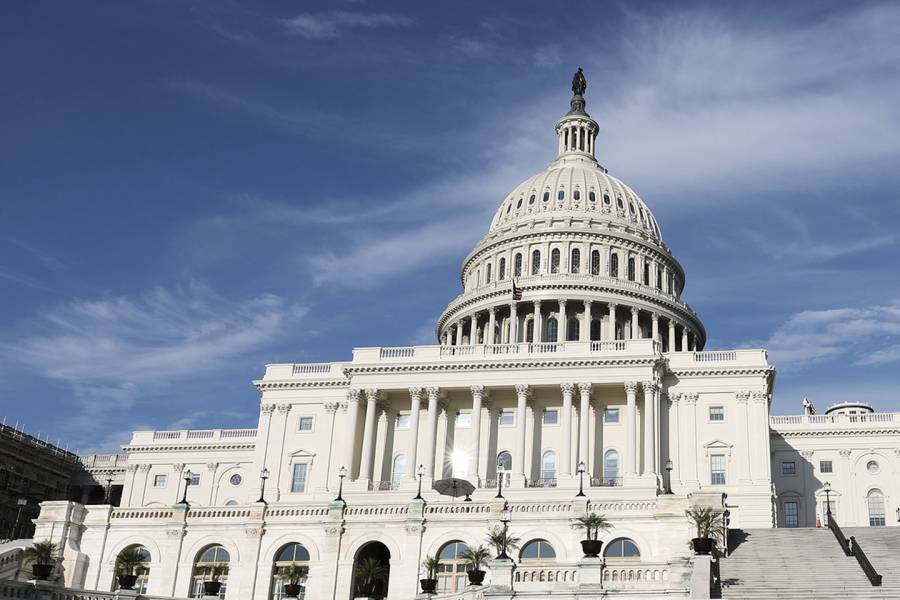- Name
- Jill Rosen
- jrosen@jhu.edu
- Office phone
- 443-997-9906
- Cell phone
- 443-547-8805
Child poverty in the U.S. is pervasive, expensive, and, according to Johns Hopkins economist Robert Moffitt, avoidable.
Moffitt joined a group of 14 other subject matter experts in coauthoring a report released today by the National Academies of Sciences, Engineering, and Medicine that outlines a path for reducing child poverty in the U.S. by as much as 50 percent.
Commissioned by the U.S. Congress in 2015, A Roadmap to Reducing Child Poverty suggests that the best strategy for reducing the number of American children living below the poverty line involves strengthening existing assistance programs and introducing new credits. The committee—which included experts in economics, public policy, child psychology, and human development—suggests these strategies can also increase employment and earnings among adults living in low-income families.
"Our goal as a committee of experts was not to make political decisions, but to examine research evidence and make a report that outlines facts and offers an effective route toward eliminating child poverty," Moffitt said. "I hope that when we present our findings to Congress they understand how much our country can do to reduce child poverty if we put our will to it."
The Hub spoke with Moffitt about the report, its findings, and the best path forward for the U.S. to reduce the number of children living in poverty.
Why should reducing child poverty be a policy priority?
Child poverty is actually very expensive for our country. The problem is that most of these costs are not visible—they're seen in things like childhood trauma, poor health outcomes, lower educational attainment, and lost productivity. Childhood poverty is linked to child malnutrition and health problems, and as these children grow up, they tend to have lower earnings, lower employment, and worse health conditions.
All of this negatively affects our nation's children, of course, but it also affects U.S. labor markets. Our research showed that having such high rates of childhood poverty costs 4 to 5 percent of the U.S. gross domestic product (between $800 billion and $1.1 trillion) annually. So these costs are extremely high.
What are some of the key findings in the report?
First, we found that child poverty in the U.S. is still very high. About 13 percent of all children in the U.S.—roughly 9.6 million children—live in families that have incomes below the poverty line, which was $26,000 in 2015. That number is something we should absolutely be working to reduce.
The second thing we found is that many of the programs in place in the U.S. are already making a dent in reducing child poverty rates. For example, the food stamp program—if that program weren't around, child poverty rates would be about 5 percentage points higher than they are now. So clearly some of what we're already doing is also effective.
What are the recommendations the committee lays out in the report?
We recommend strengthening existing programs and introducing new ones that could reduce child poverty by 51-52 percent. The first is to expand the Earned Income Tax Credit, or EITC, which is a tax credit for low-income families that helps them supplement their income and get them above the poverty line. The second is to introduce a child care subsidy. We have a severe problem in this country of finding affordable, high-quality child care. Our findings show that subsidizing child care for women in particular helps them get back to work and advance their careers.
We also found that many families on food stamps run out of them by the end of the month. So we propose a 20 percent increase in the value of food stamps to help end hunger for families. And we propose a major expansion of the number of subsidized housing units available to poor families. Securing affordable housing goes a long way in reducing child poverty rates.
Finally, and perhaps most importantly, we propose creating a child allowance program that gives a tax credit to every family with a child under the age of 18. It's been shown to reduce child poverty rates in some European countries, and a recent program of that type in Canada has been projected to reduce child poverty by over 40 percent. By our calculations, a child allowance in the U.S. of a little under $3,000 per child per year would have a major effect on reducing child poverty.
All of this sounds expensive—and we calculated the costs of these programs to be about $91 billion a year to about $108 billion a year—but that's a lot less than the cost of poverty that we have right now.
What do you wish more people understood about child poverty in the U.S.?
I think that many in the general public have the idea that most welfare programs in the U.S. have failed, and that's just not true. We've done a great deal to reduce poverty, even in the last 20 years, but there's still more that can be done.
Poverty is not inevitable—it's not something we have to feel helpless about or can't do anything about. We need the public will to address the problem, and for our leaders and legislators to understand why addressing childhood poverty should be a priority. I hope the report helps a little bit to correct the misperceptions and to assist Congress in their efforts to reduce child poverty in the United States.
Posted in Health, Voices+Opinion, Politics+Society
Tagged economics, poverty, childhood trauma, public policy











